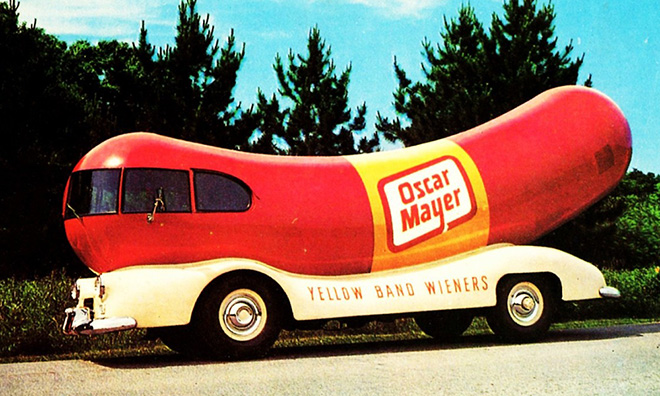
Dog Days of Summer: Four Things You Probably Didn’t Know About Hot Dogs
In honor of July's status as National Hot Dog Month, and just in time for the Fourth of July, here are a few things you probably didn't know about the sausages.
Editor’s note: This story, originally posted in 2013, has been updated.
For a lot of Americans, the upcoming week will be full of fireworks, family—and, possibly, a couple of frankfurters.
The National Hot Dog and Sausage Council (NHDSC) is ready. The association is celebrating its annual Hot Dog Month this July.
There’s a reason it’s at this time of year, and not, say, in November. According to statistics from the association, people eat 7 billion hot dogs in the U.S. between Memorial Day and Labor Day—150 million of those on July 4 alone. If lined up end to end, those 150 million hot dogs would stretch from DC to LA more than five times.
Just in time for the Fourth of July, check out these little nuggets to get you in the hot-dog-eating spirit:
1. The Coney Island Shuffle
The history of the hot dog and the history of New York’s Coney Island are intertwined to such a point that the hot dog played a major role in the boardwalk’s growth.
In 1870, stand owner Charles Feltman, finding pies to be too cumbersome to sell at the amusement park, started selling his brand of sausages in rolls—the first time that had ever been done and also the starting point of a budding empire for Feltman.
In 1916, another piece of history was made: Nathan Handwerker, a onetime employee of the Feltman family, decided to strike out on his own with slightly cheaper hot dogs, a move that proved a huge success—the restaurant chain that bears his name is still active today, known especially for its annual hot-dog-eating contest.
That contest’s entrants have their own professional sports league, the International Federation of Competitive Eating, or the more ESPN-friendly Major League Eating.
(Side note: The “Coney dog”, while named for Coney Island, is not from there—that’s a Michigan-based dog variation. However, if you’re on Coney Island and want a hot dog with sauce, there’s an option for that: the Michigan hot dog. Funny how that works.)

2. NYC vs. Chicago
When people think of hot dogs, the two types that many people think of right off the bat are New York’s lightly adorned beef dogs, which generally come with mustard and onions; and Chicago’s trimming-heavy dogs, which build upon the mustard and all-beef dogs with dark relish, sport peppers, tomatoes, a pickle spear, and a dash of celery salt.
But not to be outdone, Los Angeles eats more hot dogs than any other city, NHDSC notes. And other locales, such as West Virginia and Seattle, have their own takes on the handheld meal.

3. The Wienermobile’s Roots
When Oscar Mayer’s hot-dog-shaped Wienermobile first took to the roads in 1936, it was a crazy idea brought forth by the nephew of the company’s owners—complete with its own driver, George “Little Oscar” Molchan, who was hired to take the helm of the vehicle because he was only 44 inches tall. Anyone larger than that wouldn’t have been able to fit into the original motorized sausage.
The vehicle, which became a PR boon for the company, has evolved numerous times over the years. The most recent update happened in May, when Oscar Meyer renamed the vehicle for the first time in nearly 100 years. Now known as the Frankmobile, the new name pays homage to a new recipe for Oscar Mayer’s 100% Beef Franks, which recently debuted nationwide.

4. For the Vegetarians
While veggie dogs are increasingly common, especially in baseball parks around the country, the Worthington Foods brand, which later became known for its Morningstar Farms line of frozen foods, first created a vegetarian hot dog in 1949. The product, renamed Veja-Links in 1954, comes in a can and is still sold today under the Loma Linda brand name—though it now has a lot more competition on the shelves.
And if you’re looking to sink your teeth into something tasty but meat-free, People for the Ethical Treatment of Animals has a list of restaurants nationwide that have turned veggie dogs into an art form.
How do you dig your hot dogs? Tell us in the comments below.
(iStockphoto/Thinkstock)






Comments